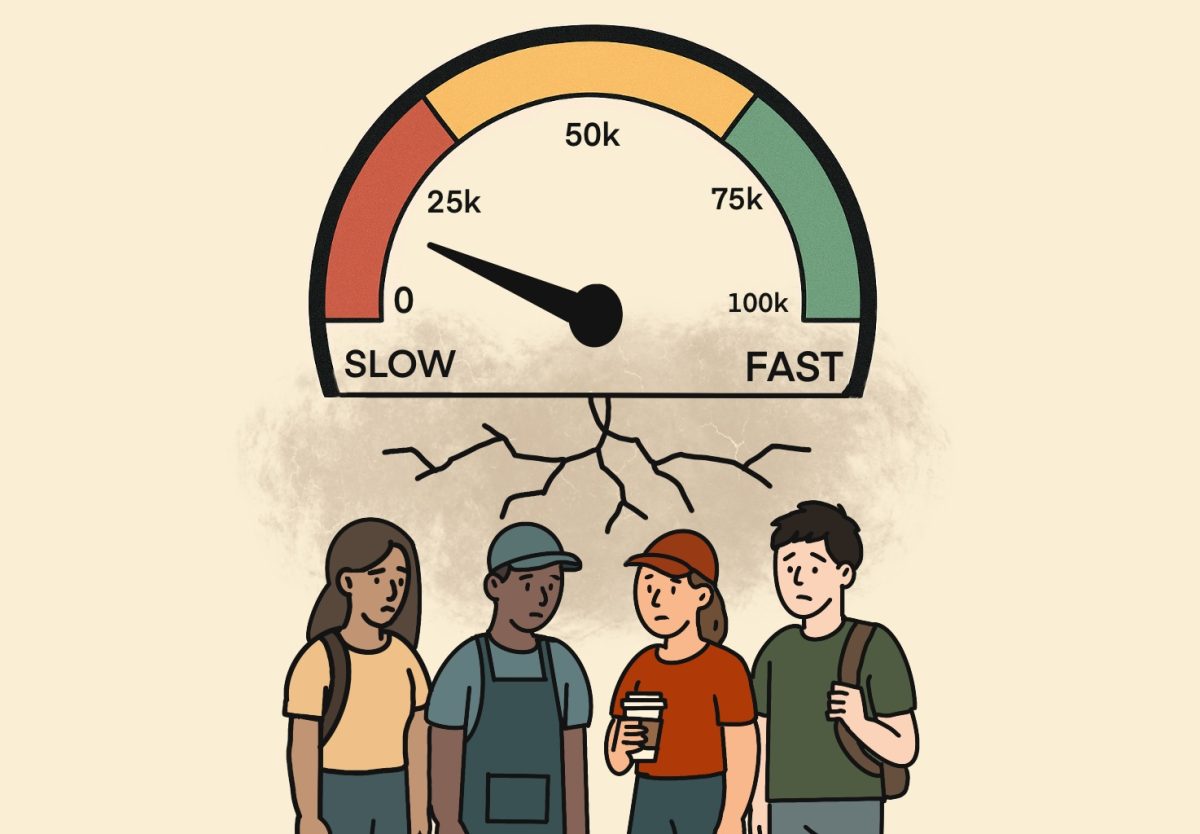MODA exhibit offers controversial, creative art forms
October 11, 2017
Museum of Design Atlanta’s (MODA) exhibit “Text Me” centers around the theme of how the use of text and words impact our everyday lives. The exhibit compiles a diverse sample of art in many types of mediums, including collage, print, painting, sculpture, and digital art.
When I first entered MODA, friendly staff and an inviting atmosphere greeted me. The process of purchasing a ticket to enter the exhibit was fast and easy, and I was happily surprised to discover that student admission was affordable at only $5.
The exhibit was organized into three sections: a main hallway with framed 2D art, a side room with digital art, and a back room with sculptural art.
In the hallway, I was instantly drawn to a sculpture by James Victore. It consisted of a long dining table hanging from the ceiling, on top of which were eleven ceramic plates with single letters painted on them. The location of the table successfully tied together the art on the walls.
After admiring the table, I diverted my attention to the art hanging on the walls of the hallway. Each piece had a completely different style, but all revolved around the theme of text in art. These art mediums included comics, collages, graphite, oil paint, and screen prints.
One of the most interesting pieces in the hallway was Romeo and Juliet by Sam Winston. Winston had printed out the entirety of Shakespeare’s Romeo and Juliet and separated the play into sections in which the characters displayed rage, passion, and solace. The result was a complex and intriguing collage. While I did not see the significance of dividing the play into those sections, the collage itself possessed textural and abstract elements that made it pleasing.
I then made my way into the side room that contained large-scale digital art. One wall was entirely covered by a projected animation of a moving script, and on another wall were TVs with animated images of different letterforms and typefaces. I wasn’t a huge fan of the art in this room simply because I prefer 2D art over digital art. Nevertheless, it was interesting and well done.
The art in the backroom proved to be my favorite; the pieces were mostly sculptural and focused on the subtle ways in which our lives depend on language. This room looked like a model of a house, with one portion dedicated to text in bathrooms, another to text in bedrooms, and another to text in living rooms.
The bathroom section of the backroom included a mirror, a shower curtain, and a bathtub, each with different quotes on them. The most interesting piece in this section was Merci Marcel by Ken Carbone. It was a set of 9 mounted urinals, each with one word printed on it. The entire sculpture spelled out the phrase “Art proves one man’s plumbing is another man’s art.” In all honesty, I neither cared for nor understood this piece, but it was interesting because I did not expect to see urinals on the wall of a museum.
Also in the back room were models of a bedroom and a living room. Both of which contained household items with various words and phrases on them, including vases with phrases like “Karma Vessel” and “We Do Not Fear Change” painted on them.
The “Text Me” exhibit required a level of social and political awareness in order to appreciate it because many of the pieces of art surrounded controversial topics, like political and social issues. While I liked several pieces in the “Text Me” exhibit, the message of how text affects our everyday lives was lost in translation and not strongly conveyed.
Most of the pieces were clever and well done, but several of them were pretentious and nonsensical. Despite this, I would encourage anyone who likes contemporary art and typefaces to visit the “Text Me” exhibit before it closes on February 4th.





